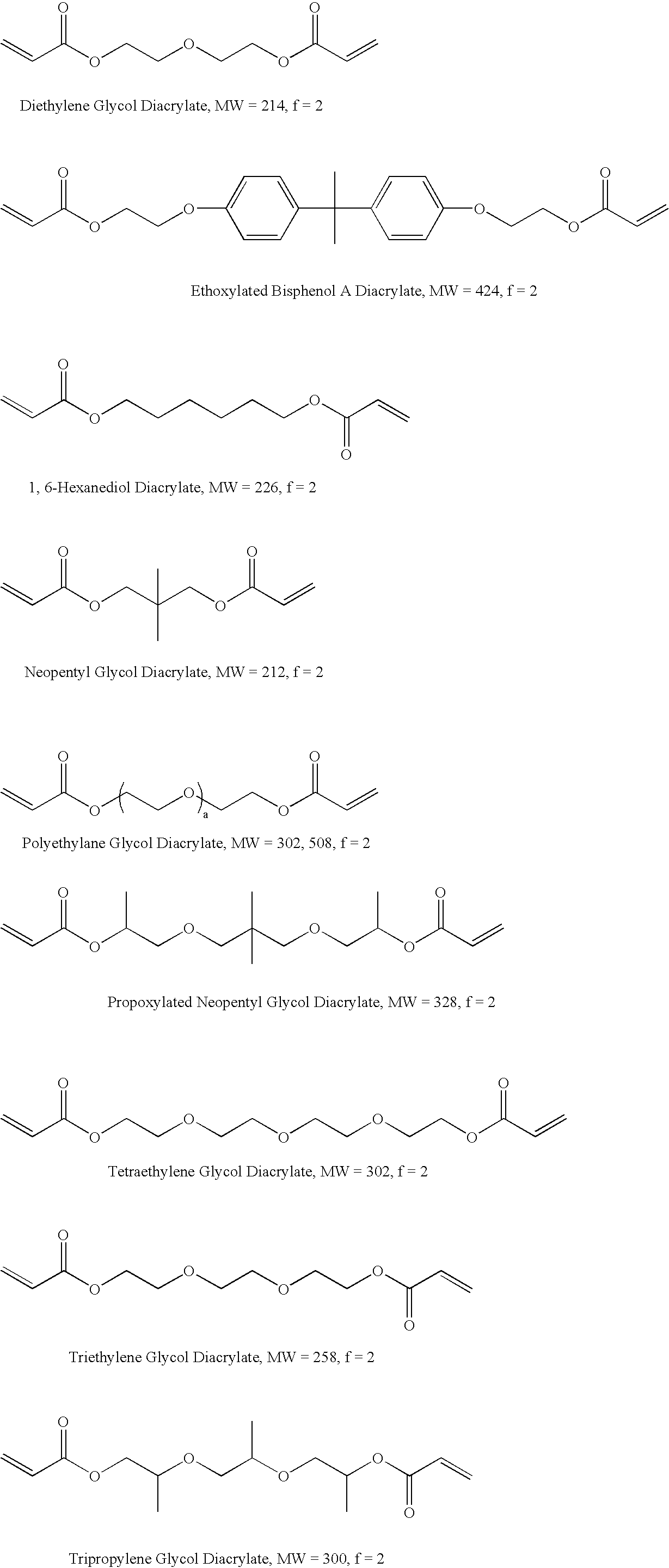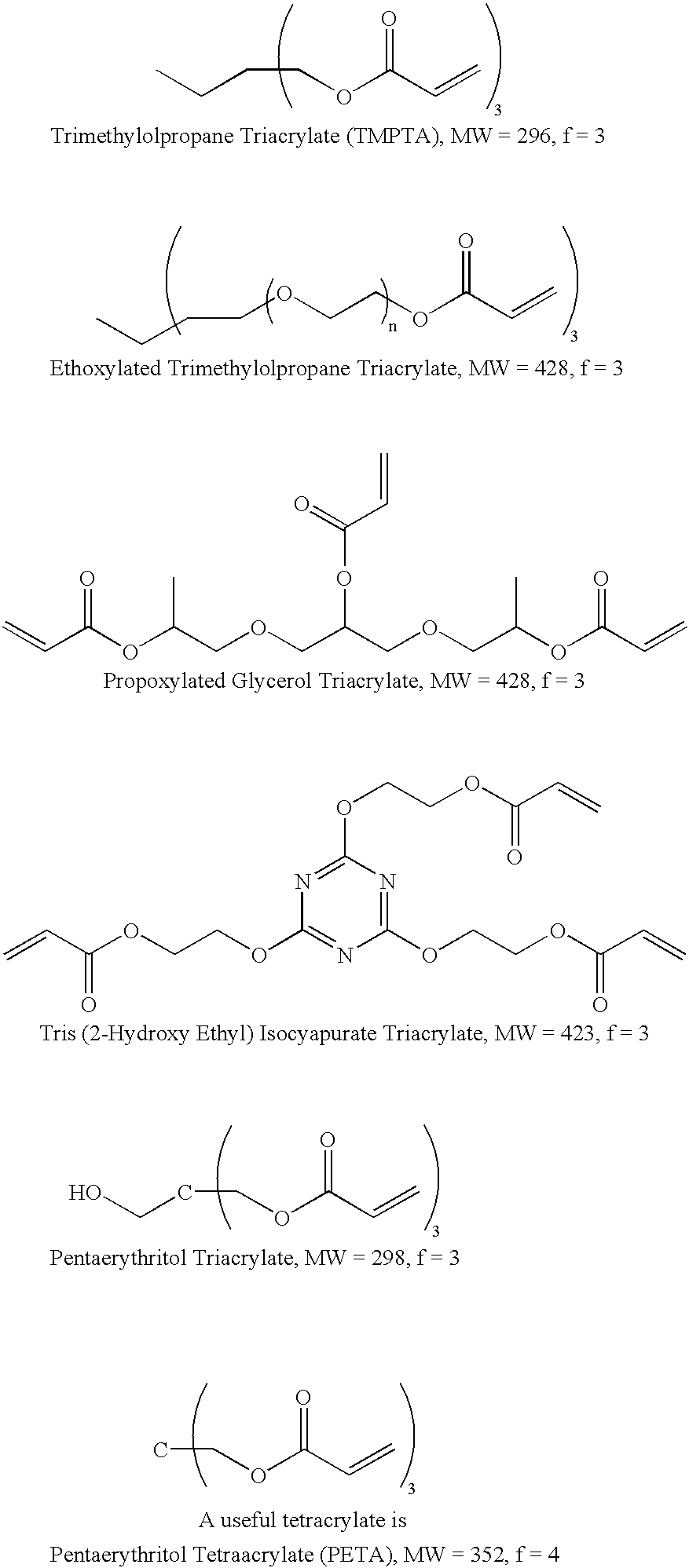Self-photoinitiating multifunctional acrylates
a multifunctional, self-photoinitiating technology, applied in the field of self-photoinitiating multifunctional acrylates, can solve the problems of adverse health effects, acrylate free radical reaction is typically inhibited by oxygen, and creates problems affecting worker, consumer and environmental safety, etc., to reduce, if not eliminate, the problem of acrylate free radical reaction
- Summary
- Abstract
- Description
- Claims
- Application Information
AI Technical Summary
Benefits of technology
Problems solved by technology
Method used
Image
Examples
example 1
A 2 g sample of resin prepared via the Michael Addition of ethyl acetoacetate (5%) to trimethylolpropane triacrylate (TMPTA, 95%) followed by reaction with diethanolamine (10% with respect to acrylate component) is placed in an aluminum pan and subjected to one 630 mJ / cm.sup.2 (approximate) exposure to a Fusion "H" bulb. A rigid, dry, tack-free film with no amine odor is obtained.
example 2
A 2 g sample of resin prepared via the Michael Addition of ethyl acetoacetate (5%) propoxylated glycerin triacrylate (GPTA) (95%) followed by reaction with diethanolamine (10% with respect to acrylate component) is placed in an aluminum pan and subjected to one 630 mJ / cm.sup.2 (approximate) exposure to a Fusion "H" bulb. A rigid, dry, tack-free film with no amine odor is obtained.
example 3
A 2 g sample of resin prepared via the Michael Addition of ethyl acetoacetate (5%) to pentaerythritol triacrylate (SR 444) (95%) followed by reaction with diethanolamine (10% with respect to acrylate component) is placed in an aluminum pan and subjected to one 630 mJ / cm.sup.2 (approximate) exposure to a Fusion "H" bulb. A rigid, dry, tack-free film with no amine odor is obtained.
PUM
| Property | Measurement | Unit |
|---|---|---|
| composition | aaaaa | aaaaa |
| structure | aaaaa | aaaaa |
| temperature | aaaaa | aaaaa |
Abstract
Description
Claims
Application Information
 Login to View More
Login to View More - R&D
- Intellectual Property
- Life Sciences
- Materials
- Tech Scout
- Unparalleled Data Quality
- Higher Quality Content
- 60% Fewer Hallucinations
Browse by: Latest US Patents, China's latest patents, Technical Efficacy Thesaurus, Application Domain, Technology Topic, Popular Technical Reports.
© 2025 PatSnap. All rights reserved.Legal|Privacy policy|Modern Slavery Act Transparency Statement|Sitemap|About US| Contact US: help@patsnap.com



